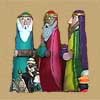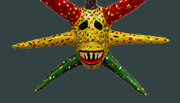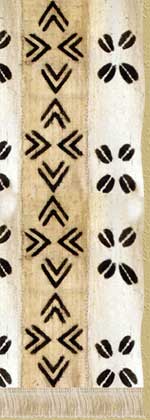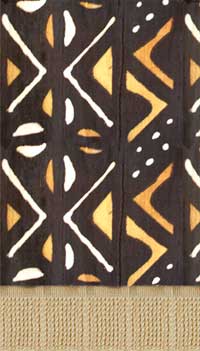Las máscaras vejigantes son de estilo borinqueño tradicional. Hay dos tipos: cartón piedra ( del área europea de Ponce) y esqueleto de coco ( del área africano de Loiza). Típicamente varios cuernos estan colocados en la parte más alta de la másacara y son pintados con colores brillantes. Lilly hace sus propias máscaras cartónes piedras usando moldes hechas a mano y después pone jalea de petróleo encima y añade varias tapas de periódico. Para moldear las máscaras de estilo Loiza, Lilly crea un molde usando un coco y luego la transforma en una calabera usando plastilina. Ella pinta diseños de colores sobre la máscara usando pinturas acrílicas.
Se llevan máscaras vejigantes cada 26-28 de julio durante las fiestas del Apostol Santiago. Las bailarinas se ponen máscaras para espantar a los niños y entretener a la gente. Tradicionalmente llevan vesículas de vaca y las sacuden cuando caminan por la calle y cantan "coco coco coco coco vejigante coco coco." Lilly creó una muñeca vejigante usando cartón de piedra para la máscara y gasa para el disfraz.
Lilly creó otros estilos como máscaras pintadas de malla y máscaras más pequeñas que se esculpe y molde.
Máscaras Vejigantes de Ponce
Las máscaras vejigantes de Ponce se hacen de carton piedra y se usan tradicionalmente durante el Carnaval. Primero se construye un molde de barro o plástico, y entonces se cubre con papel húmedo (Lilly usa a petrolatum). Al secar, se quita el molde. Entonces se añaden los cuernos, hecho del mismo modo, y se pinta la máscaras con colores brillantes. Los danzantes vejigantes se usan las máscaras con trajes coloridos llamado "mamelucos" y fingen secuestrar a los niños.
Máscaras Vejgantes de Loíza
Las máscaras vejigantes de Loíza se hacen de coco y se usan típicamente durante el festival de Santiago Apostol en julio. Lilly fabrican los moldes de barro usando coco, y después las pintan con colores brillantes. Era tradicional para los danzantes vejigantes llevar las vejigas que agitan a los niños, cantando "coco coco coco, vejigante come coco." Loiza es área de Puerto Rico con más influencia africana, y es evidente en la música, llamado bomba, que se toca durante el festival.
Caretas Vejigantes de Hatillo
Tradicionalmente, las caretas de Hatillo se hacian de tela metálica. Hatillo es un pueblo en Puerto Rico que fue fundada por gente que llegó en 1823 desde las Islas Canarias. Lilly hacen las caretas de Hatillo de tamaño pequeno, usando tela. Los hombres se usan estas caretas durante el festival el 28 de diciembre cuando se disfrazan de soldados de Herodes. Ellos se visten de rojo, verde y amarillo, los colores tradicionales de la Navidad. Según la Biblia, el rey Herodes intento matar al bebé Jesus, y en este día en Hatillo los hombres, vestidos como soldados de el, fingen capturar los niños allí.
|















